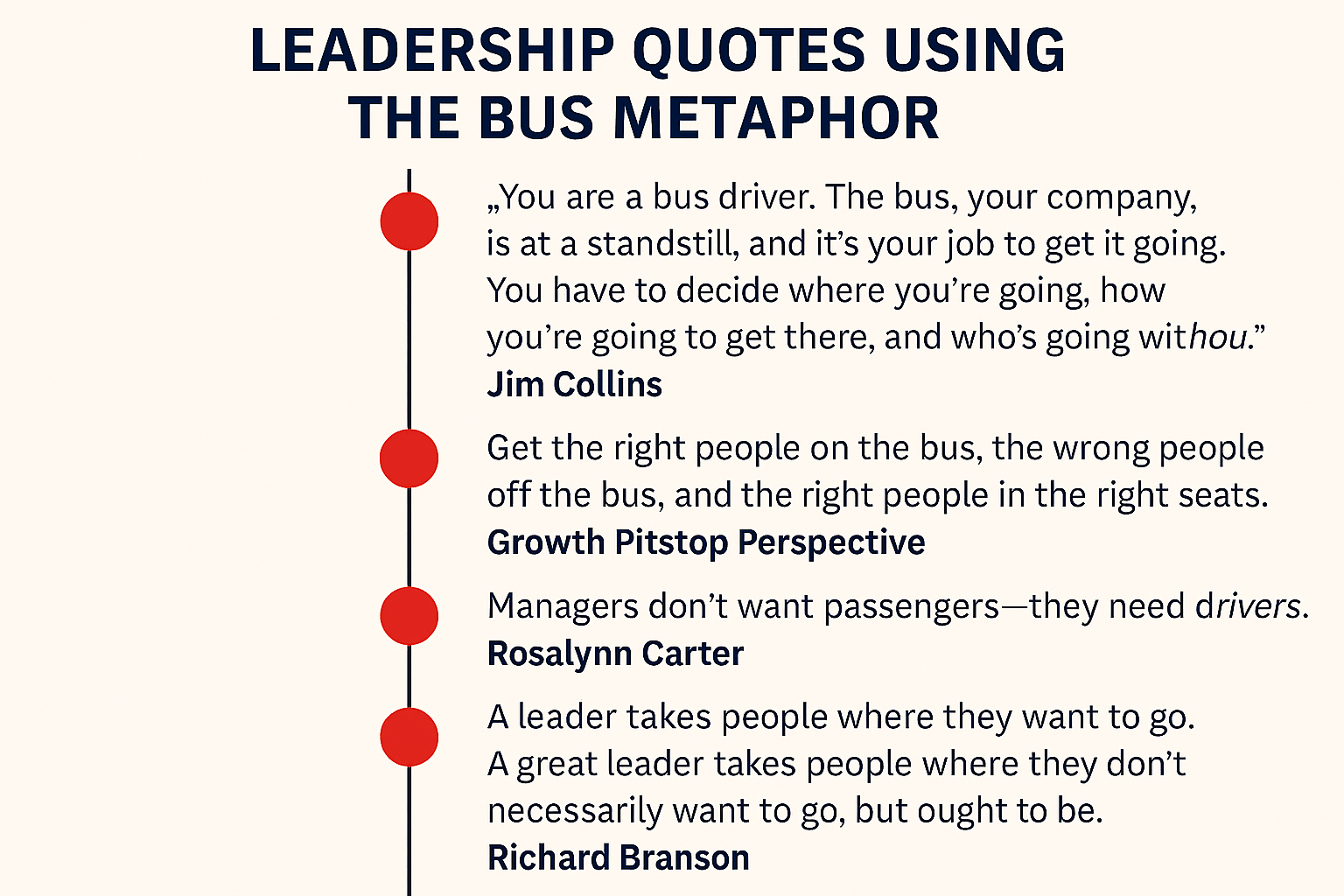“Driving the Bus” means overseeing direction and outcomes. Like a bus driver steering passengers toward a destination, the person “driving the bus” in a project or organization is responsible for decisions and results. It conveys:
- Leadership: Taking charge of strategy and execution.
- Accountability: Owning the consequences of choices.
- Influence: Setting priorities and guiding others toward a goal.
Example:
“Who’s driving the bus on this initiative?”
Translation: Who is leading and making the key decisions?
Origins of the Phrase
The metaphor draws from the literal role of a bus driver—someone responsible for transporting passengers safely and efficiently. While the exact origin is unclear, the phrase gained traction in mid-20th-century American English, likely through:
- Transportation Metaphors: Similar to “in the driver’s seat,” which dates back to the early 1900s.
- Business Jargon: Adopted in management circles during the late 20th century as companies embraced vivid metaphors for Leadership.
- Sports Commentary: Coaches and analysts began using it to describe players who dominate and dictate the pace of a game.
Historical Examples
- Corporate Leadership (1980s–1990s): Management books began using “drive the bus” to clarify project ownership. For example, consultants would ask, “Who’s driving the bus on this merger?” to identify the decision-maker.
- Sports Media: Analysts often said, “Michael Jordan is driving the bus tonight,” meaning he was carrying the team’s performance.
- Psychology & Coaching: Steven Hayes introduced the “Passengers on the Bus” metaphor in Acceptance and Commitment Therapy (ACT), illustrating how individuals must steer their life’s direction despite distracting “passengers” (thoughts and fears).
Famous Leadership Quotes Using the Bus Metaphor
-
Jim Collins, Good to Great
“You are a bus driver. The bus, your company, is at a standstill, and it’s your job to get it going. You have to decide where you’re going, how you’re going to get there, and who’s going with you.”
This quote emphasizes the importance of vision and team alignment.
-
Jim Collins on Talent
“Get the right people on the bus, the wrong people off the bus, and the right people in the right seats.”
A timeless principle for building high-performing teams.
-
Growth Pitstop Perspective
“Managers don’t want passengers—they need drivers.”
A modern twist on the metaphor, urging empowerment over control.
Other Leadership Quotes That Complement the Metaphor
-
Rosalynn Carter
“A leader takes people where they want to go. A great leader takes people where they don’t necessarily want to go, but ought to be.”.
-
John Maxwell
“A leader knows the way, goes the way, and shows the way.”
-
Richard Branson
“Business opportunities are like buses; there’s always another one coming.”
This quote cleverly ties opportunity to the bus metaphor.
Why It Resonates
The phrase is effective because it is both visually appealing and relatable. Everyone understands the responsibility of a bus driver—if they fail, everyone on board suffers. Similarly, in Leadership, poor decisions can derail an entire team or organization, making the metaphor engaging and thought-provoking.
Bottom Line
“Driving the Bus” is more than a catchy idiom; it’s a metaphor for Leadership, accountability, and influence. Whether in boardrooms, locker rooms, or therapy sessions, it reminds us that someone must steer the course—and that role carries weight.
